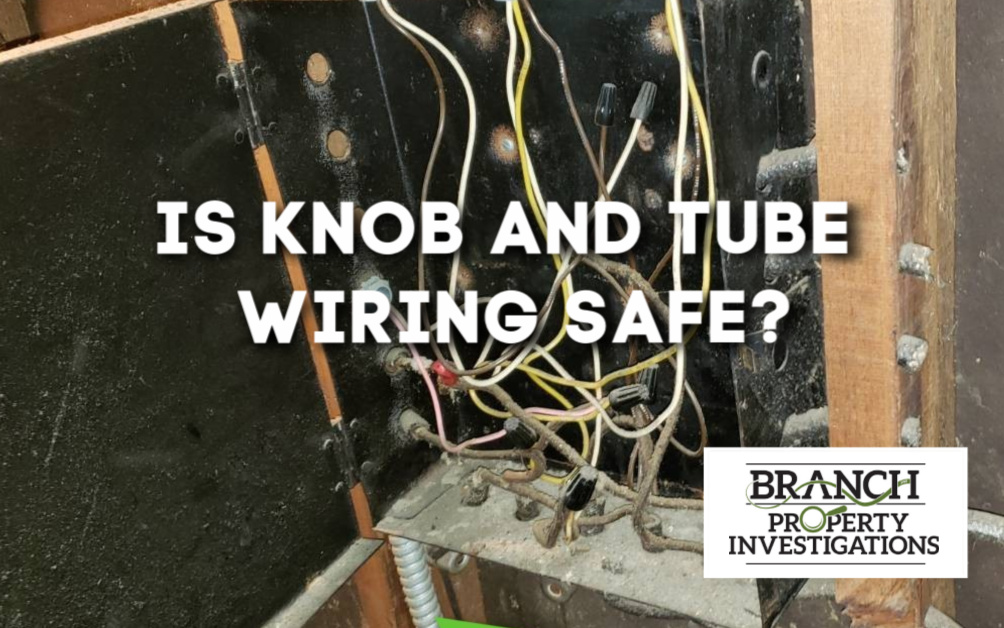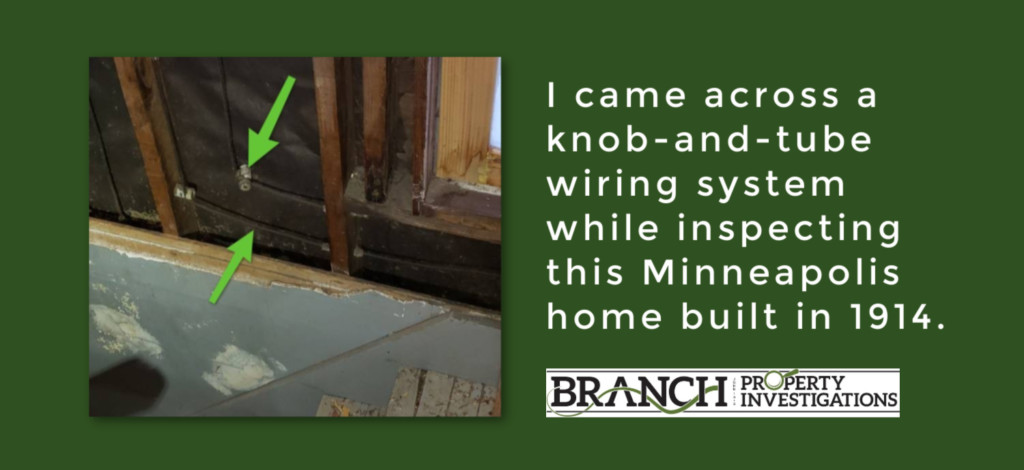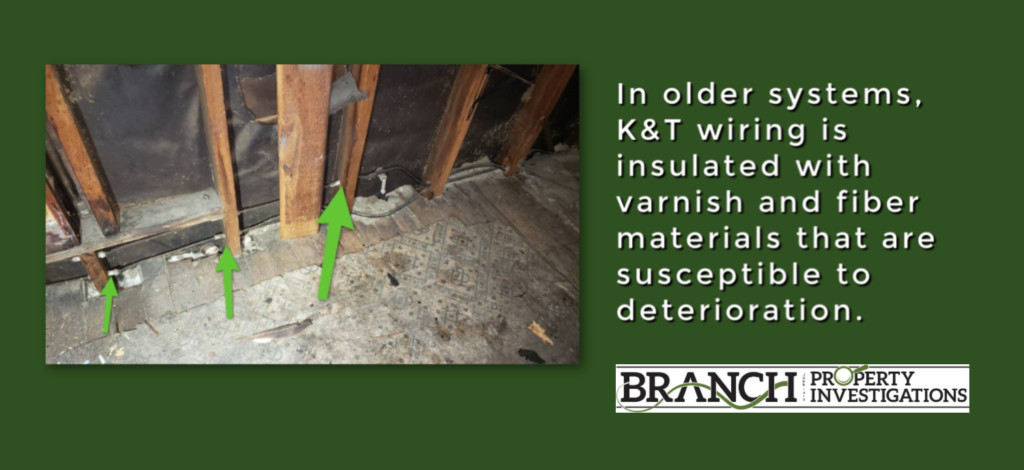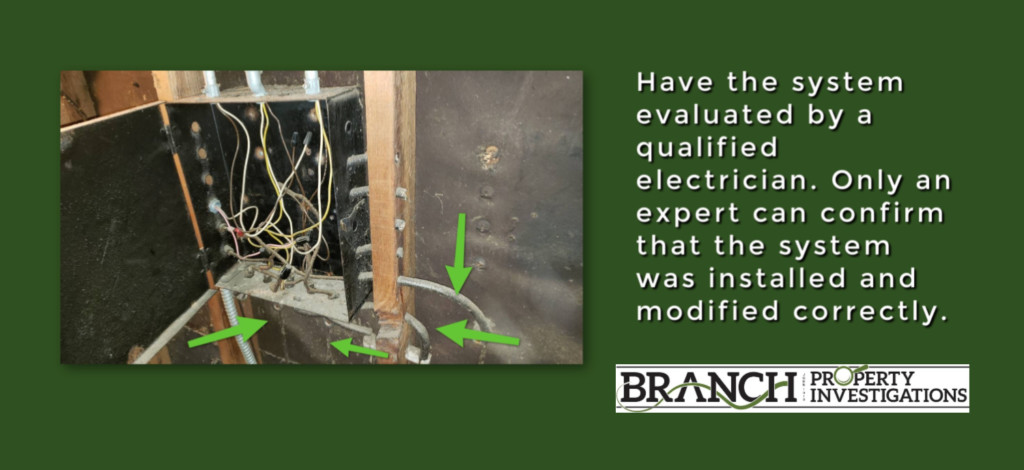Knob and tube (K&T) wiring is a system of electrical wiring common in homes built from 1880’s – 1930’s. I came across it while inspecting a Minneapolis home last week that was built in 1914. I want to shed some light on the issue because although the system is considered obsolete and can be a safety hazard, some of the fear associated with it is undeserved.
Why the Reputation?
There isn’t anything inherently dangerous about knob and tube wiring. As long as it was installed correctly it probably worked fine. The main problem with this early wiring system is the likelihood that it was improperly modified. This often happens many decades after initial installation. Also, building insulation was commonly laid down on top of the knob-and-tube wiring. This interferes with its ability to cool down and presents a fire hazard. 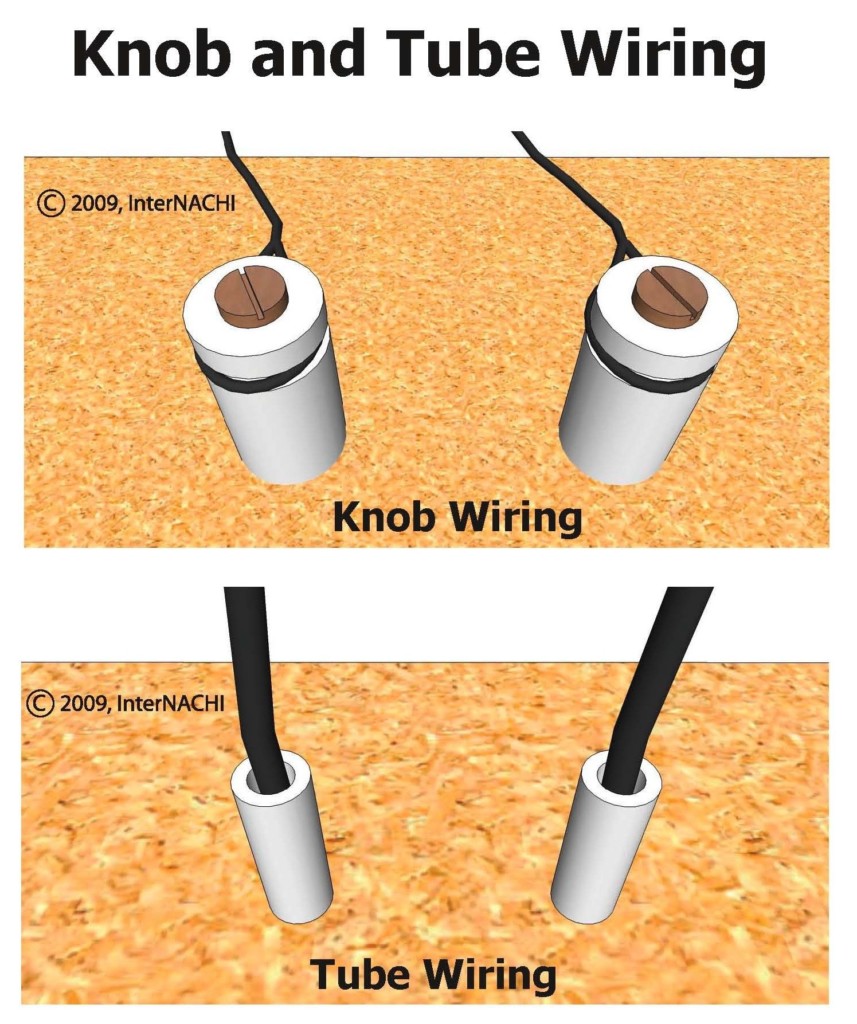
Here are some facts about knob-and-tube wiring directly from the International Association of Home Inspectors:
- It is not inherently dangerous. The dangers from this system arise from its age, improper modifications, and situations where building insulation envelops the wires.
- It has no ground wire and thus cannot service any three-pronged appliances.
- While it is considered obsolete, there is no code that requires its complete removal.
- It is treated differently in different jurisdictions. In some areas, it must be removed at all accessible locations, while others don’t. They only inspect it for safety reasons.
- It is not permitted in any new construction.
How Knob-and-Tube Wiring Works
K&T wiring consists of insulated copper conductors passing through lumber framing drill-holes via protective porcelain insulating tubes. They are supported along their length by nailed-down porcelain knobs. Where wires enter a wiring device, such as a lamp or switch, or were pulled into a wall, they are protected by flexible cloth or rubber insulation called loom.
Advantages of Knob-and-Tube Wiring
- K&T wiring has a higher ampacity than wiring systems of the same gauge. The reason for this is that the hot and neutral wires are separated from one another, usually by 4 to 6 inches. This allows the wires to readily dissipate heat into free air.
- K&T wires are less likely than Romex cables to be punctured by nails. K&T wires are held away from the framing.
- The porcelain components have an almost unlimited lifespan.
- The original installation of knob-and-tube wiring is often superior to that of modern Romex wiring. K&T wiring installation requires more skill to install than Romex. For this reason, unskilled people rarely ever installed it.
Problems Associated with K&T Wiring
- Unsafe modifications are far more common with K&T wiring than they are with Romex and other modern wiring systems. Part of the reason for this is that K&T is so old that more opportunities exist for improper modifications.
- The insulation that envelopes the wiring is a fire hazard.
- It tends to stretch and sag over time.
- It lacks a grounding conductor. Grounding conductors reduce the chance of electrical fire and damage to sensitive equipment.
- In older systems, wiring is insulated with varnish and fiber materials that are susceptible to deterioration.
Compared with modern wiring insulation, K&T wiring is less resistant to damage. K&T wiring insulated with cambric and asbestos is not rated for moisture exposure. Older systems contained insulation with additives that may oxidize copper wire. Bending the wires may cause insulation to crack and peel away.
K&T wiring is often spliced with modern wiring incorrectly by amateurs. This is perhaps due to the ease by which K&T wiring is accessed.
K&T and Building Insulation
K&T wiring by design dissipates heat into free air, and insulation disturbs this process. Insulation around K&T wires will cause heat to build up. This creates a fire hazard. The 2008 National Electrical Code (NEC) requires that K&T wiring systems not be covered by insulation. Specifically, it states that this wiring system should not be in “hollow spaces of walls, ceilings and attics where such spaces are insulated by loose, rolled or foamed-in-place insulating material that envelops the conductors.”
K&T Wiring and Insurance
Many insurance companies refuse to insure houses that have knob-and-tube wiring due to the fire risk. Exceptions are sometimes made for houses where an electrical contractor deems the system to be safe.
If You Have Knob-and-Tube Wiring
- Have the system evaluated by a qualified electrician. Only an expert can confirm that the system was installed and modified correctly.
- Do not run an excessive amount of appliances in the home, as this can cause a fire.
- Where the wiring is brittle or cracked, it should be replaced. Proper maintenance is crucial.
- K&T wiring should not be used in kitchens, bathrooms, laundry rooms or outdoors. Wiring must be grounded in order for safe use in these locations.
- Rewiring a house can take weeks and cost thousands of dollars. However, unsafe wiring can cause fires, complicate estate transactions, and make insurers skittish.
- Homeowners should carefully consider their options before deciding whether to rewire their house.
- The homeowner or an electrician should carefully remove any insulation found surrounding K&T wires.
- Prospective home buyers may want to get an estimate of the cost of replacing K&T wiring so they know with confidence the anticipated expense.
In summary, knob-and-tube wiring is likely to be a safety hazard due to improper modifications and the addition of building insulation. I always inform my clients about its potential dangers and advise further evaluation by a licensed electrician.


